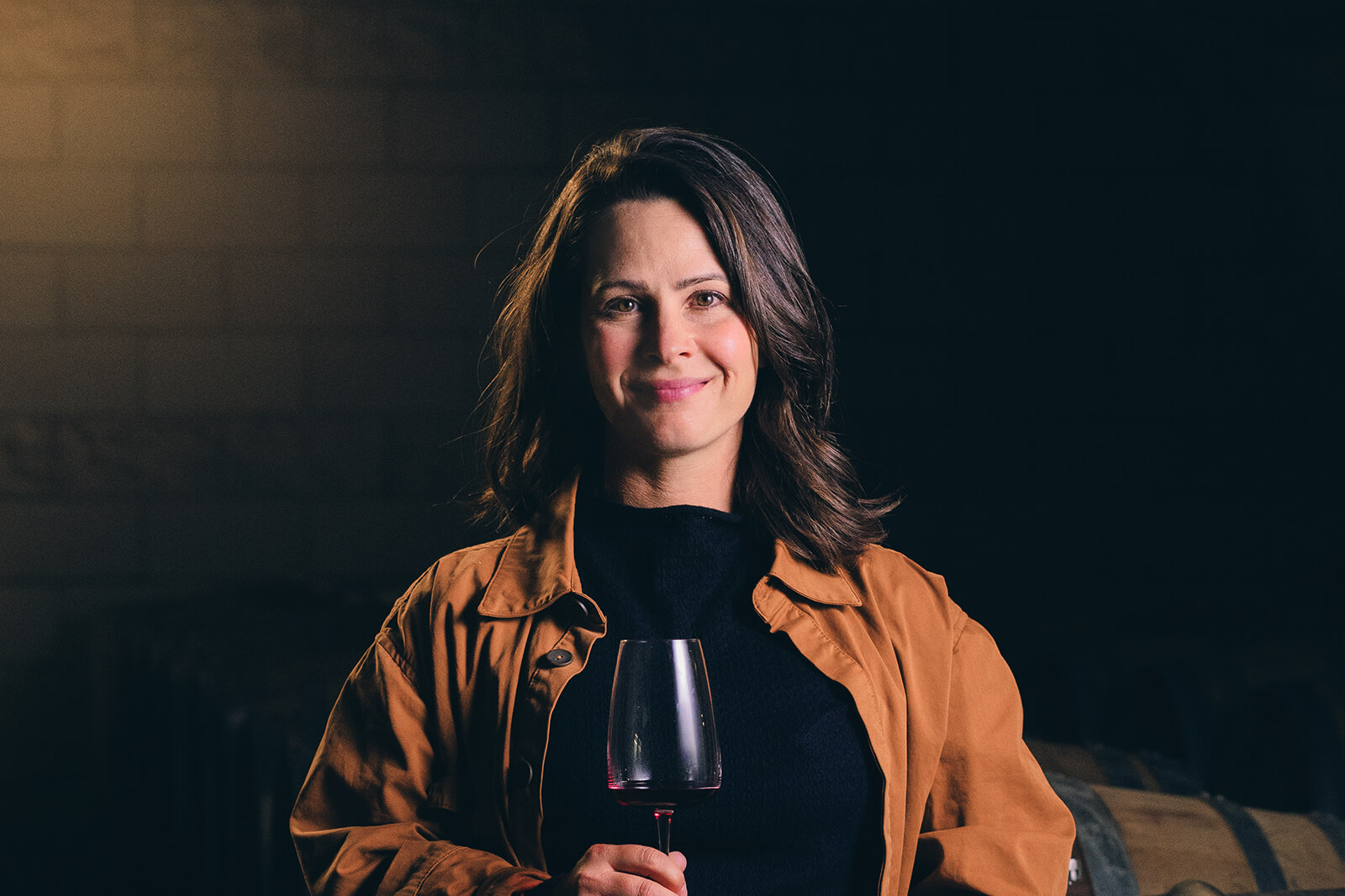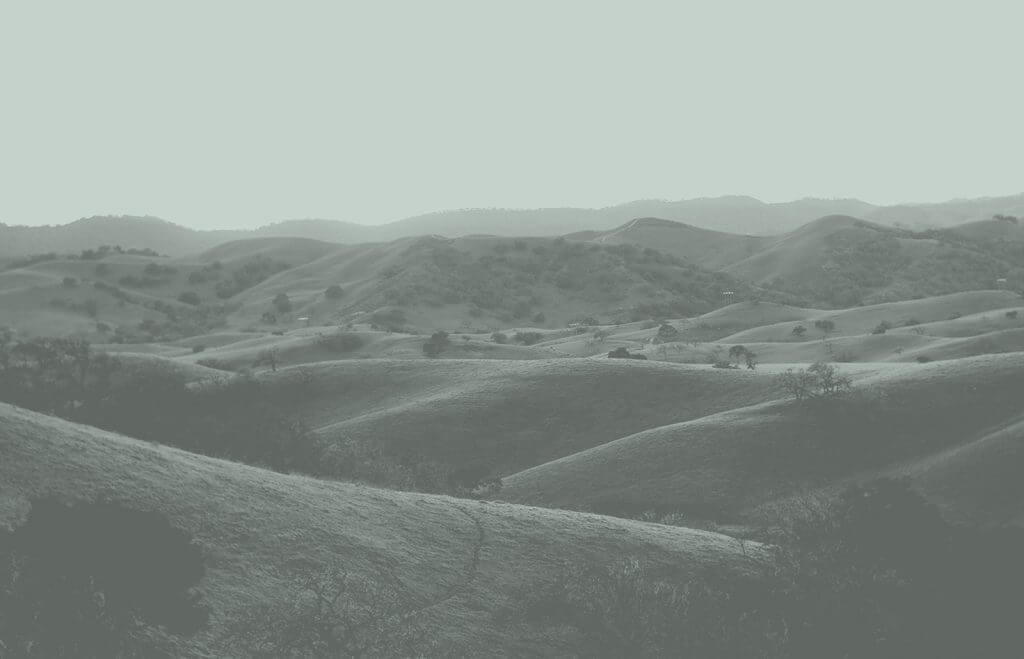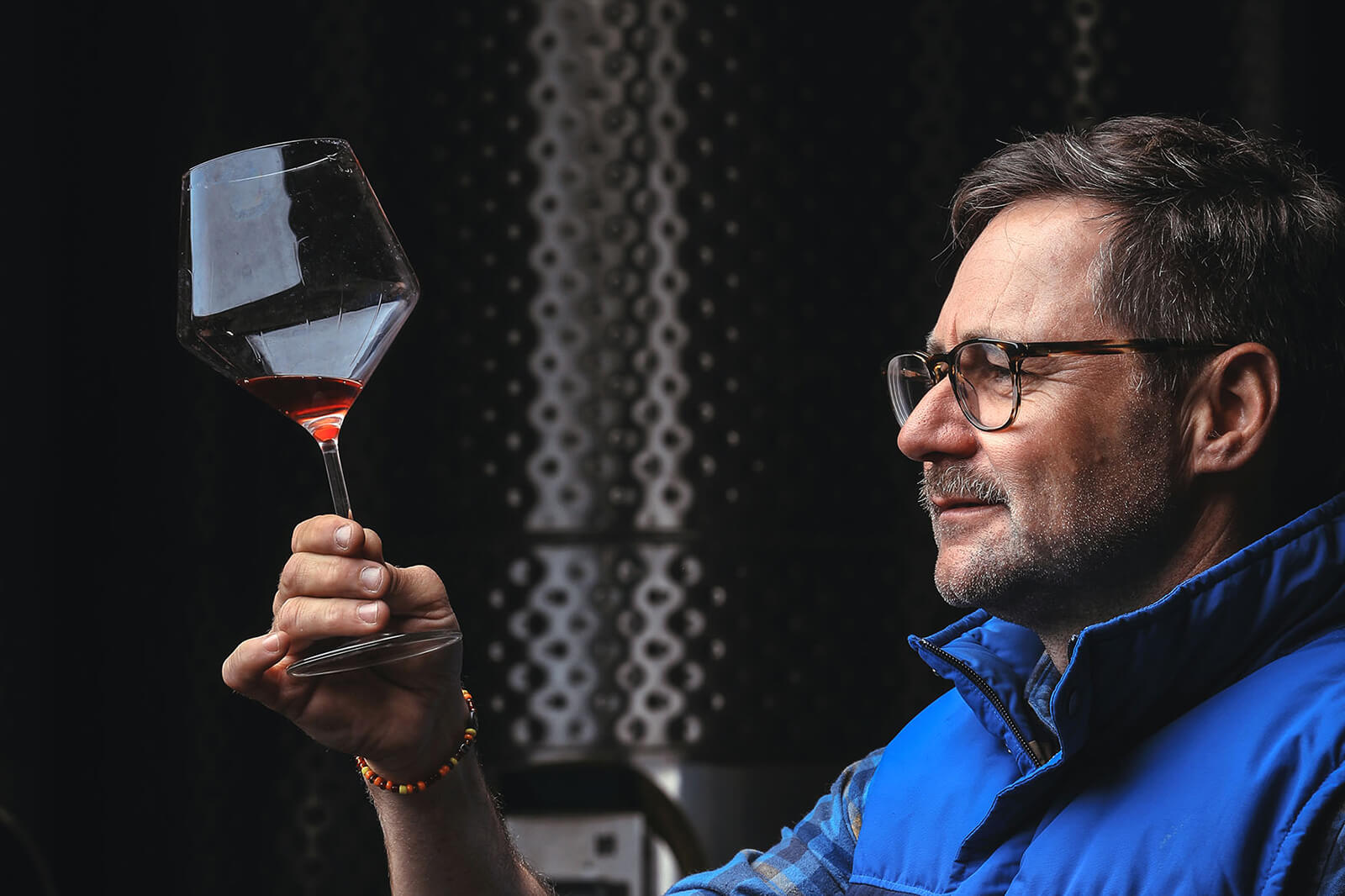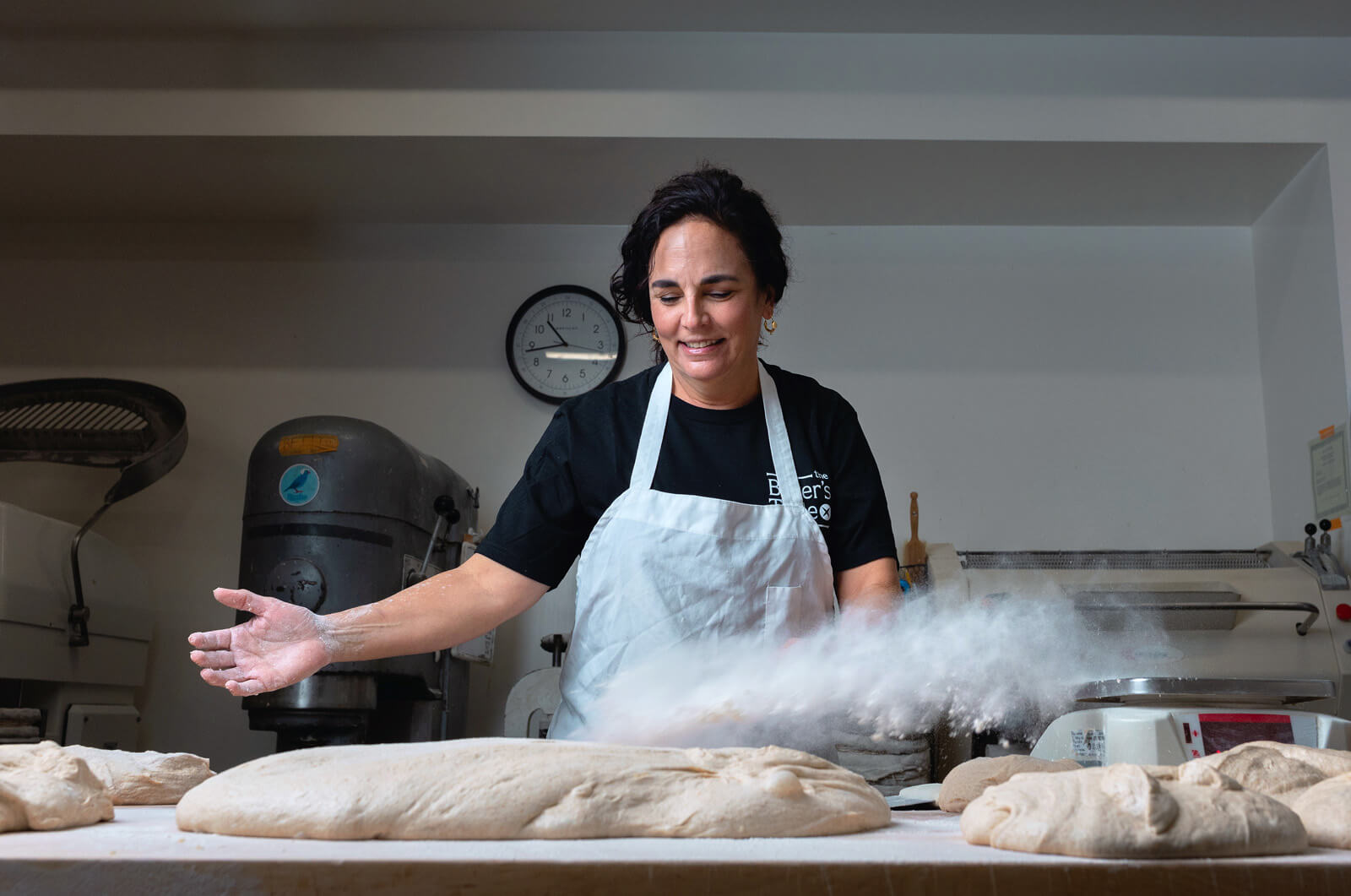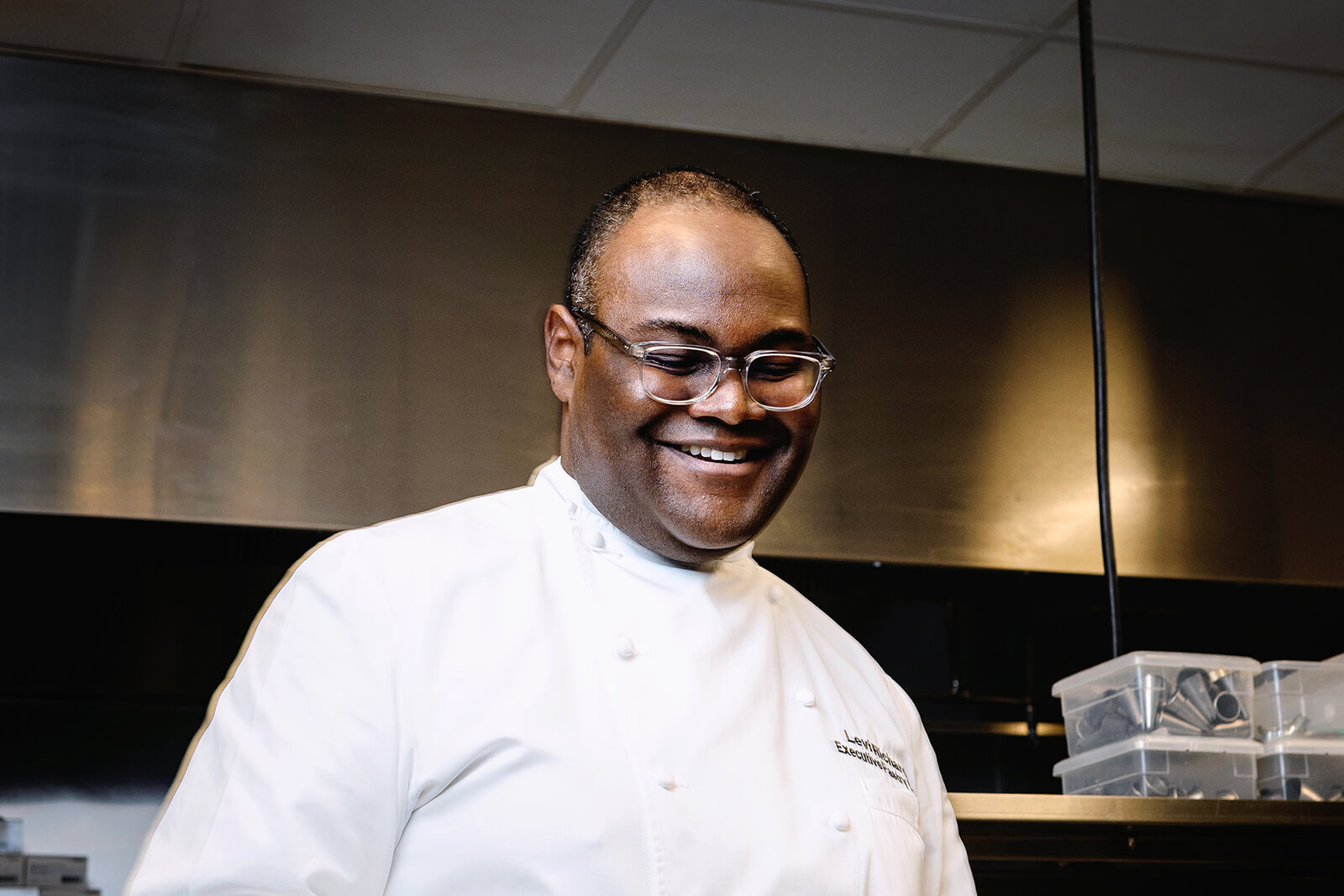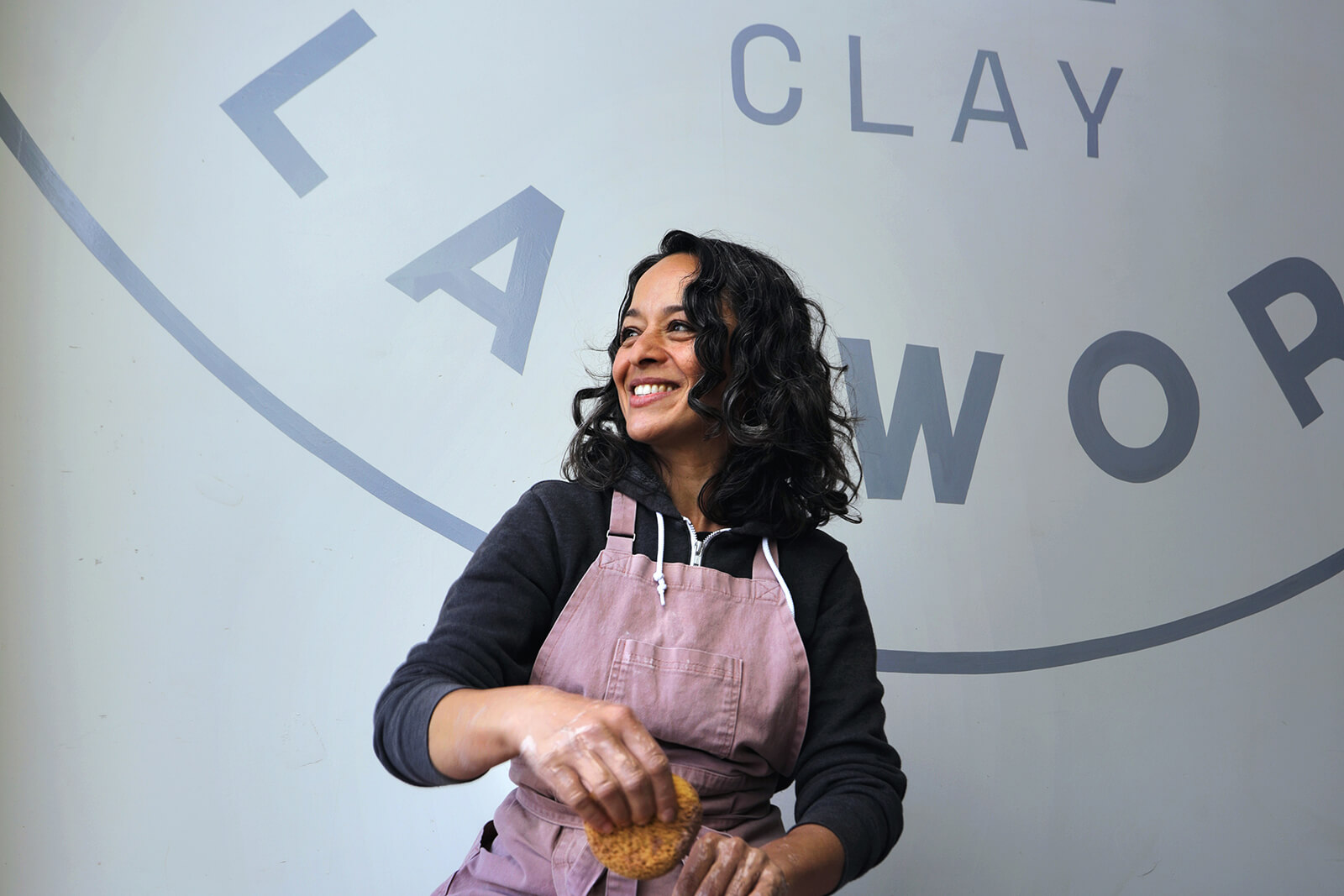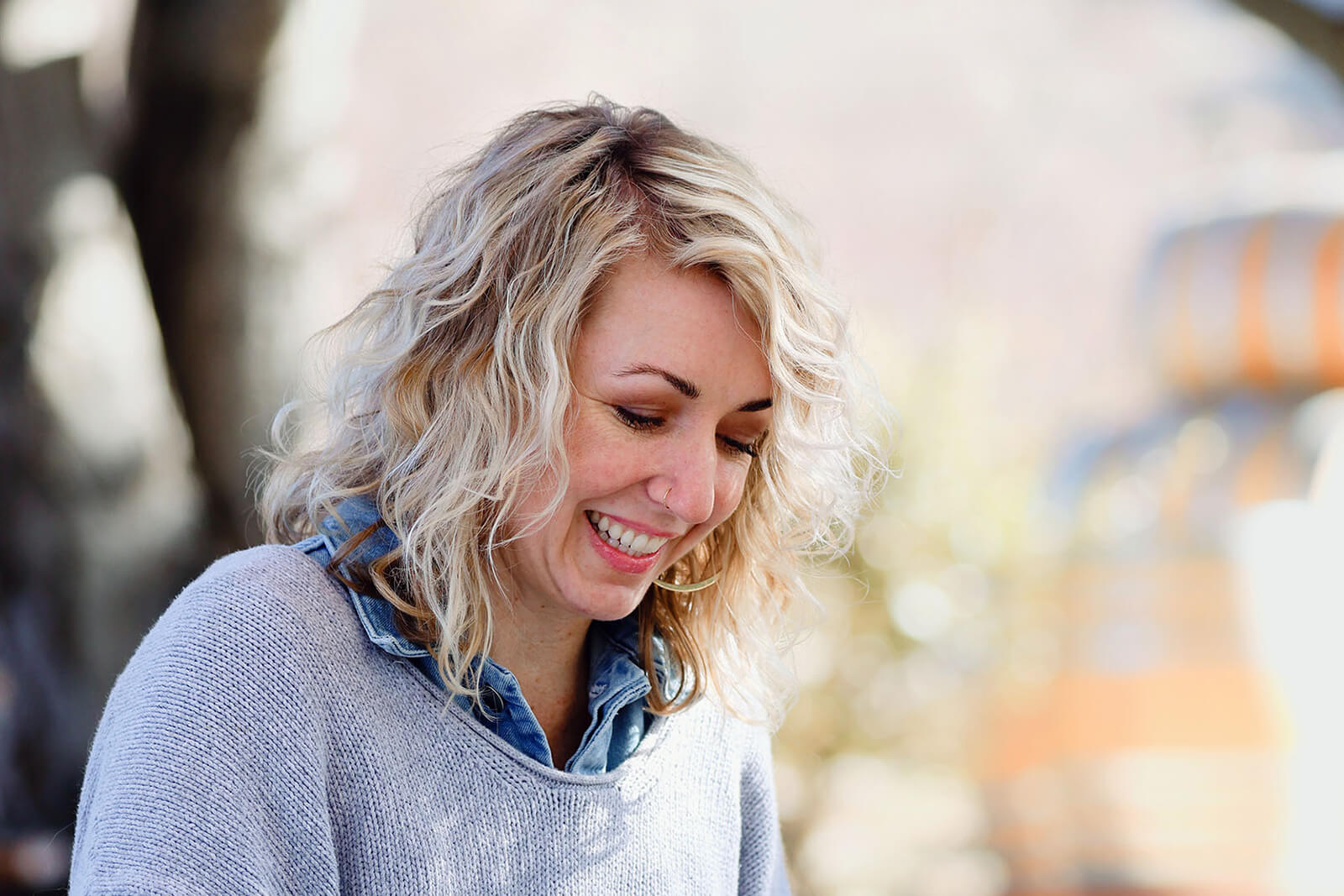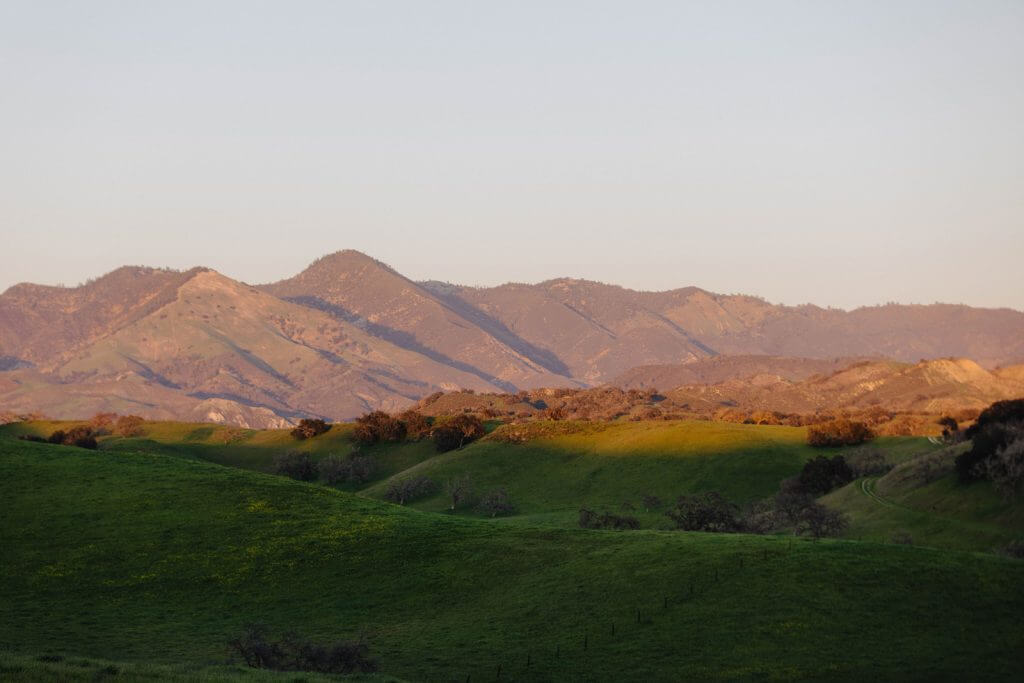Learn the Art of Their Craft
Meet SYV Maker, Brit Zotovich
Maker Brit Zotovich grew up in Santa Clara, California—a place not exactly known for wine. At twelve, she moved to Grass Valley where she joined FFA and even earned the title for Supreme Champion Market Hog. Following her advisor’s suggestion, she visited Cal Poly and fell in love with the school, embracing its “Learn by Doing” motto and joined a club called Vines to Wines. There, she coordinated themed wine events called “Fabulous Fridays”, and it was at one of these events that she met her future husband, Ryan. After college, the pair made their way to the Santa Ynez Valley, to pursue their passion for winemaking together. We sat down with Brit to learn more about her journey.
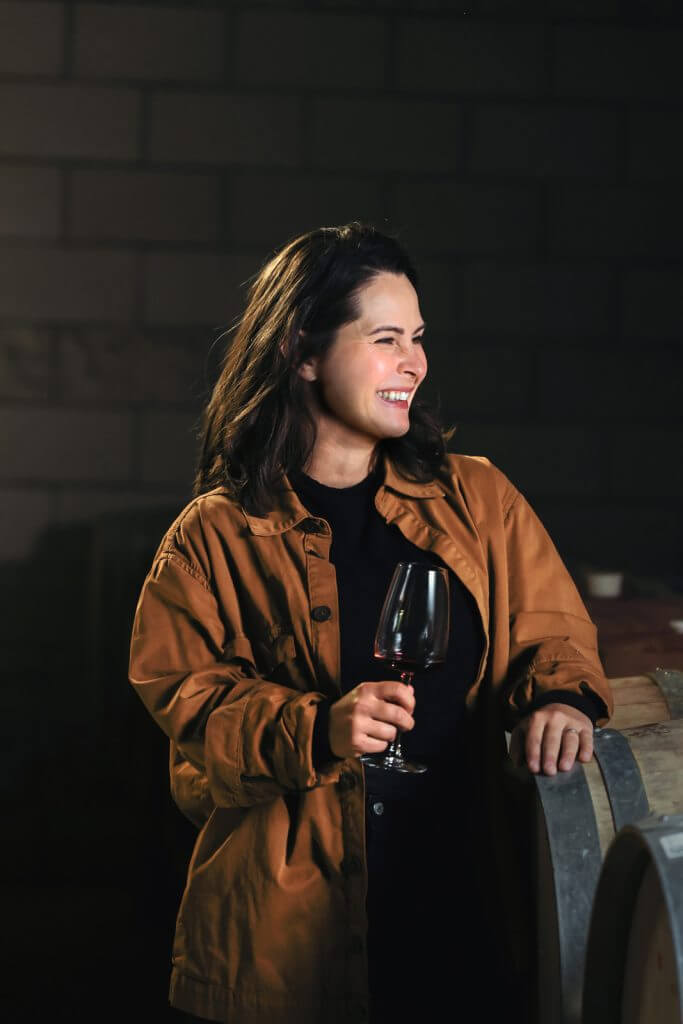
Tell us about your winemaking journey and why you and Ryan chose to put down roots in the Santa Ynez Valley?
Brit: After college, I moved inland to the Fresno area for work, while Ryan was building his experience in the wine industry, working at places like Brewer-Clifton, Sea Smoke, and eventually his uncle’s startup winery, Zotovich. Around the time we got engaged, we had to decide between staying inland or moving back toward the coast. I love being by the water—it’s more than a love; I feel like I need it for peace of mind. So, when Ryan was asked to take over the winemaking for Zotovich Cellars, it made sense for us to move to the Santa Ynez Valley. Together, we launched their wine club, built the website, and developed the brand. It was a collaborative effort, and we began distributing wine throughout Santa Barbara and San Luis Obispo counties.
When we got married, we moved onto the vineyard property in a 40-foot fifth-wheel trailer for about four and a half years. It was a practical way to save money, and it allowed Ryan to be right there managing the vineyard. There were definitely some tough moments, like running out of water while I had shampoo in my hair, but overall, it was a great experience. Before that, we had lived in Lompoc in a shared house with other wine industry folks. It was a tight-knit community where we’d come home, open a bottle of wine, and just talk about our days.
Now, we live in Happy Canyon in the township of Ballard. We found our current property, a 5-acre parcel, on Zillow while using one of those old cards for internet—back when satellite Wi-Fi was still a novelty. I remember looking at the listing and thinking, ‘Could you imagine if we were able to buy property and build a house someday?’ It’s a long story, but one of the neighbors on that property ended up asking Ryan to make wine for him, which led to even more opportunities in the wine world. It’s been quite the journey!
What are some of your passions, and how do they overlap? How does winemaking fit into that?
Brit: For me, farming is incredibly hopeful. It gives me a sense of purpose—nurturing something from seed and watching it grow. But it’s also emotional. There have been times where I’ve cried because my hobbies cannibalize each other. Like with my artichokes, which I planted from seed after they cross-pollinated in my yard. One was a green globe and the other a purple Roman variety, and while it’s been amazing to watch them grow, it’s also challenging. If I’m gone for a few days—like when I went to the Channel Islands—and come back to find one wilted, it’s heartbreaking. Losing a plant, especially after putting so much care into it, is really tough.
As for winemaking, it feels like an extension of this passion. You nurture something, in this case grapes, and then you get to ferment them—transforming them into something new. It’s all connected. Farming, winemaking, and even other projects like Dreamcôte—where I get to be creative and see ideas come to life—all these passions play off each other. They give me inspiration and help me find balance. Each one fuels the other in its own way.
Can you tell us about Dreamcôte and how it got started?
Brit: Dreamcôte started while we were living in a trailer, and I was working for Terravant Wine Company, a custom crush facility where winemakers would come in and use shared equipment to make their wines, which was a great way to keep costs down and collaborate. At the time, Ryan and I were working together, but I knew working with family could be tricky, so I set a boundary—I’d work there for one year. After that, I moved on to focus on other projects, but Ryan and I have always worked well together. We’ve learned over the years that we need separate projects to keep things running smoothly—too many chefs can ruin the soup, as they say.
When we were living in the trailer, I started thinking about becoming a mom, and it dawned on me that I wouldn’t have the flexibility I needed if I worked for someone else. I didn’t know any companies that would allow me to take six weeks or six months off, or let me work flexible hours, so I realized if I wanted that kind of freedom, I had to build it myself. That’s how Dreamcôte was born.
Entrepreneurship runs in my family—my father and grandfather were entrepreneurs—so it felt natural to start my own business, even though I didn’t know everything at the time. I just kept putting one foot in front of the other.
Hospitality is one of my true passions. I love hosting people, making dinner, and using ingredients from my garden. Wine brings together my love for hospitality and farming. Growing grapevines is a long-term investment—it’s not something you replant every year. It’s about watching things grow and evolve and turning those grapes into wines with vintage variations that make each year unique.
Winemaking reminds me of the ceramics class I’m taking right now. We were working on creating sets, trying to get them to look similar, which is like managing vintage variation in wine. You want some consistency, so people recognize your style, but I also appreciate the differences each year brings. If you wanted perfection, you’d go to Pottery Barn—but I love a little variation. It’s what makes winemaking exciting, especially when you have to make decisions in response to things like heat waves or downpours. It’s exhilarating and keeps you on your toes.
How do you balance being a mom and running a business?
Brit: I’m a mom to my 8-month-old daughter, and right now, I don’t have a typical day, which is unsettling in some ways. Even in winemaking, there was no ‘typical’ because some days I’d be working with restaurants in LA or checking on the vineyards. I prefer to get my vineyard checks done in the mornings when it’s cooler, with a big thermos of coffee. Walking through the vines as the fog lifts is absolutely magical—it’s my favorite part of the job.
One thing I didn’t anticipate was how much I’d rely on my team. We’re a small group—just me, Ryan, and Nicole. Since becoming a mom, I’ve had to lean more on Nicole, and she’s been incredibly supportive. I really didn’t see this coming, but the saying ‘it takes a village’ rings true in so many ways. The business runs at my pace now, which has its pros and cons—I can sometimes be the bottleneck—but I’m learning to balance being a full-time mom and running Dreamcôte.
I have big aspirations for next year, like hosting a garden party. I’d hoped this would be my best garden year, but I’ve been a bit distracted, so it didn’t turn out that way. But that’s okay—there’s always next year. The hope that next year will be better keeps me going.
How has being a mom changed your mindset?
Brit: When I say this, I’m concerned that people won’t take it at face value. Because it sounds so polished. You know? It sounds canned. Becoming a mom has given me an enormous amount of empathy for other people.
I used to have little patience for situations like when someone couldn’t get childcare. I’d think, ‘Come on, Sharon, just get it together,’ without understanding how complex and difficult it truly is to balance everything. Now, I look back and I’m embarrassed by how dismissive I was. Motherhood has changed that completely. I see how critical things like rest and time for oneself are, both for my daughter and for adults. It’s so clear to me now—when my daughter misses a nap or a meal, she melts down like clockwork. It’s made me realize that when people are stressed, they just need something simple: a break, a snack, or more sleep.
Overall, motherhood has shifted my focus to creating a healthy work environment where people can thrive both at work and in their personal lives. I want to foster a culture that understands and makes space for life outside of work. We were all born, and someone made time and space for us—so if I can do that for others, that’s my goal. It’s something I care deeply about.
What ties all makers together, and do you think everyone can be a maker?
Brit: I think it’s their passion for their craft—it’s their purpose, or as the Japanese call it, ‘ikigai.’ It’s that feeling of being in a state of flow, where you’re so absorbed in what you’re doing that time just flies by. Whether it’s diving, ceramics, gardening, or stained glass, when you’re truly passionate about something, you can lose yourself in it for hours without even realizing it. That’s what connects makers—their passion and purpose.
As for whether everyone can be a Maker, I think they can. As a parent, I think a lot about exposure for my daughter, June. Even though I’m not musically inclined, I want to give her the chance to explore music. I think it’s about exposure, maybe there are some people who couldn’t be makers, I don’t know, but it’s really if they want to be. I think they can be.
Do you think there’s anything unique about the Santa Ynez Valley that makes it such a great environment for makers? It seems like we have an abundance of talent here, from chefs and winemakers to artists. Why do you think that is?
Brit: I can definitely speak to the wine industry, but I think what happens here dovetails into other industries too. I know that Santa Barbara County, and specifically the Santa Ynez Valley, has more women winemakers than any other region in the world. There’s a real sense of support here, especially from those further along in their careers, who are always willing to help those just starting out, dabbling, or even just curious about winemaking. It’s such a welcoming environment.
I remember one meetup where a woman mentioned she’d just bottled her first vintage. Naturally, I asked when we’d get to taste it, and she nervously admitted the bottles were in her car trunk. We all encouraged her to bring them in, and when she did, everyone was so excited to taste her wine. It was such a special moment—both for her and for all of us to support her.
I also think this area has a deep love for flavors, similar to a European mindset. You’ve got all these small towns close to one another, and you’ll find amazing organic farm stands along the way. A passionate chef can look at a perfectly ripe heirloom tomato from Finley Farms and think, ‘This is all I need to create an incredible dish.’ And winemakers see that same delicious tomato salad and it inspires them. It’s like this beautiful, cyclical environment where we’re all feeding off each other’s passion for food, wine, and a sense of place.
We’re incredibly fortunate to be in one of the best wine-growing regions in the world. Our proximity to the ocean, the unique transverse mountain range, and the ability to grow such a wide array of varietals due to that marine layer—it’s all so special. The eastern side of the valley is much warmer than the western side by the ocean, and that gives us this incredible diversity in what we can grow. It inspires local chefs to create amazing seasonal tasting menus that pair beautifully with the wines we make. It’s this constant interplay of flavors and creativity, and as makers, we naturally want to support others—whether they’re creating ceramics, art, or food. It’s a really special place to be.
Can you tell us a bit about the wine behind you and the winemaking process?
Brit: Sure! Right behind me is our 2023 Gamay from Sta. Rita Hills, made with full carbonic maceration using whole clusters. We start with full carbonic fermentation in stainless steel. After primary fermentation, we press the juice and let it finish in a tank before moving it into barrels to age. It’s been softening and maturing, and soon we’ll rack it, blend it in stainless steel, and bottle it. After bottling, it’ll sit for about two months before it’s ready for sale.
How long can people age your carbonic wines?
Brit: Our wines are meant to be enjoyed younger. For white wines, ciders, and pét-nats, I recommend drinking them within five years for the freshest fruit flavors. For the Gamay, it’s great out of the gate, but the best window is from around 12 months to about 6 years to enjoy that bright, primary fruit.
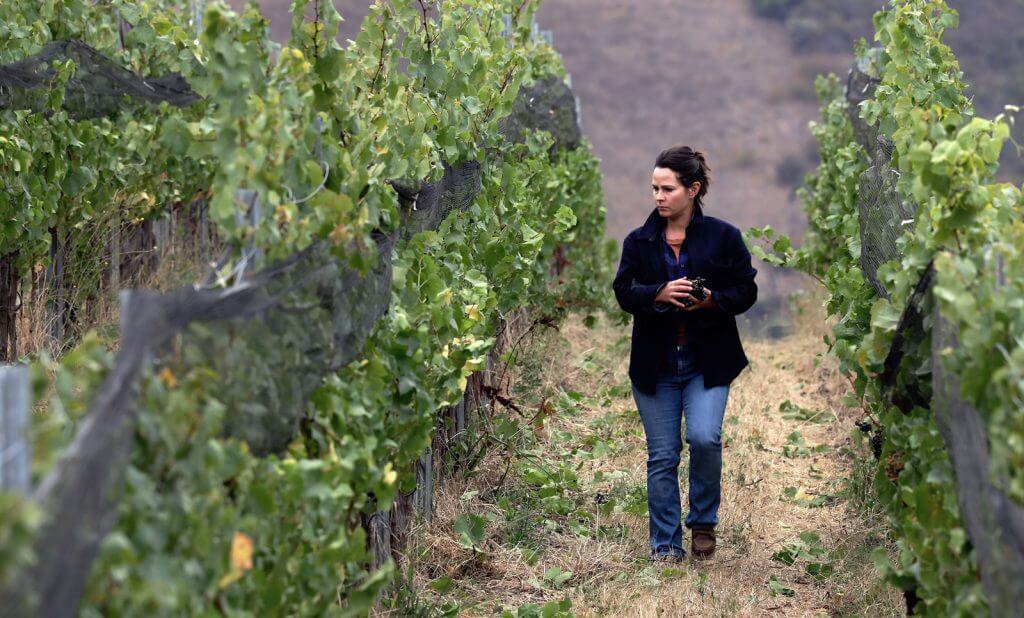
What’s one of the best compliments you’ve received on Dreamcôte that really stuck with you?
Brit: I think in regards to the wines we’re making, I try and make wines that are very lively. I want them to feel alive — fresh and juicy as the day that they were picked from fruit. When people reinforce that saying, ‘Wow, your wines are so lively.’ That’s awesome. I love that. I want them to feel alive, you know? It’s a living product.
It’s your day off in the Santa Ynez Valley, what do you do?
Brit: I almost always start my morning with a cup of coffee, unless I’m running late or forget. Then I’d probably spend some time in my garden while it’s still cool—lately, I’ve been pulling a lot of weeds and cleaning up the calendulas, which are beautiful flowers, but their season has passed. I’d also collect eggs from my chickens. After that, I’d make plans to go to lunch with a friend, maybe at Peasants Feast. I’d walk around Solvang with June, my daughter, and maybe grab a gelato from Alessio’s.
If it’s a bigger day, after gelato, I’d stop by Finley Farms to see what’s in season. Right now, they have beautiful sunflowers, tomatoes, peppers, lettuce, and corn. I would have a dinner party or maybe a porch picnic. I love just having people on my porch and just kind of hanging out. That’s one of my favorite things to do.
You mentioned golden hour and how magical it is in your garden. Can you walk us through that?
Brit: Oh, man. The light comes in perfectly, and there’s this beautiful, warm, cozy feeling. You can see little bugs on the breeze, and the way the light filters through the leaves is magical. I always know the fruit is ripe when the birds start eating my peaches! I’ll harvest half to share with others. The chickens follow me around, clucking, knowing I’ll give them kitchen scraps. The rooster crows, and the orangey glow of the light filters through—it’s just perfect.
How would you describe the Santa Ynez Valley to someone who has never been there, especially during golden hour?
Brit: Whether you take the 154 or 101 north, it’s breathtaking. Driving along the 101, you see the sparkling ocean on your left, and traffic slows as everyone takes in the view. If you take 154, you realize how much we take the mountains for granted. The rolling green hills and mountains are stunning, and they serve a purpose—they keep the cool ocean air flowing into the valley, which regulates our temperature. While other places are scorching, we get this refreshing night air. It’s even more noticeable after you’ve been in flatter places like LA or the Midwest. The landscape here is really something special.
